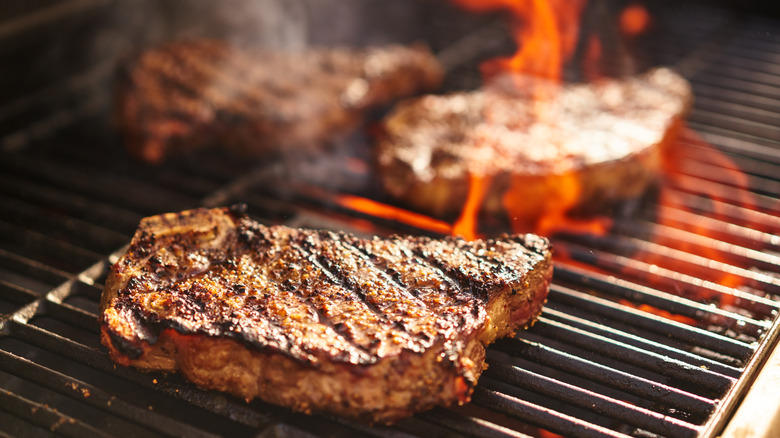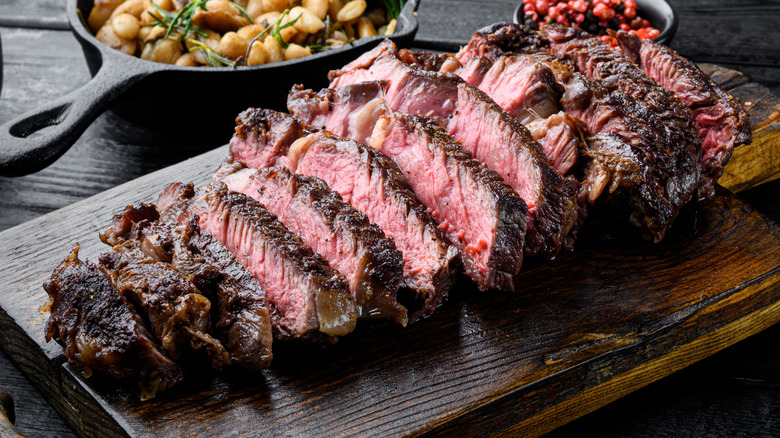Expert Pitmaster Explains How To Never Over-Smoke Your Steak
Most smoked meats tend to be fairly large: entire hams, turkeys, beef briskets, or perhaps a whole pig. While we'll happily throw smaller, thinner cuts such as steak on the grill, it doesn't always occurs to us to try a low and slow method like smoking. Perhaps we should reconsider — chef Michael Ollier, who works with Certified Angus Beef, tells Mashed that "Smoking a steak is a fun way to really level up your beef game." Before you try it, though, he suggests waiting until you're "really comfortable on your grill," explaining that steak smoking "does take a bit of expertise." You'll also need to choose the right kind of steak, meaning one that is thick and well-marbled. Something small and delicate like filet mignon won't do when you're grilling, nor will a really lean sirloin. "My favorite," Ollier tells us, "is a 2-inch thick ribeye."
He also prefers using a ceramic grill with lump charcoal and chunks of hickory wood. Even if you're an experienced griller with all of the proper equipment and you've picked out the perfect steak, you'll still need to watch out for over-smoking. Should you do so, it might wind up dry or tough or simply taste too smoky. Yes, smoking makes nearly everything taste better, and yet it's still possible to use too much smoke in a smoker. How can you avoid taking things too far? Ollier has a go-to cooking method that will help to assure that your smoked steak comes out just right.
Reverse-searing is the best way to smoke a steak
As chef Michael Ollier of Certified Angus Beef reminds us, "Smoking is a low and slow method." As such, he says, it "lends itself to reverse searing." The way to do this is to start the steak off at a low heat. When it's almost done cooking, crank up the temperature to finish things off with a nice crust. "The most important thing to remember when you're smoking beef," says Ollier, "is to remember that smoke is an ingredient." Like any other ingredient, you want to add just the right amount — not too little, but not too much. The revere sear technique is what makes this possible, as Ollier says it allows for a "kiss of smoke ... without overwhelming the cut."
Even if you do over-smoke your steak, Ollier says that all is not lost. If the meat is sufficiently thick and well-marbled, he notes "That marbling is going keep your steak juicy and flavorful." Even if it's not, though, you can always re-purpose the steak in another dish, thus averting a dinner disaster. Ollier suggests, "You could dice it up for a chili or stew, or slice it really thin for a Philly-style sandwich or fajitas," because other ingredients such as beans, potatoes, bread, and/or cheese will temper the smoky flavor so it's less overwhelming. In fact, your smoked chili or Philly could be such a hit that you might even be glad you had that happy little smoking accident.

